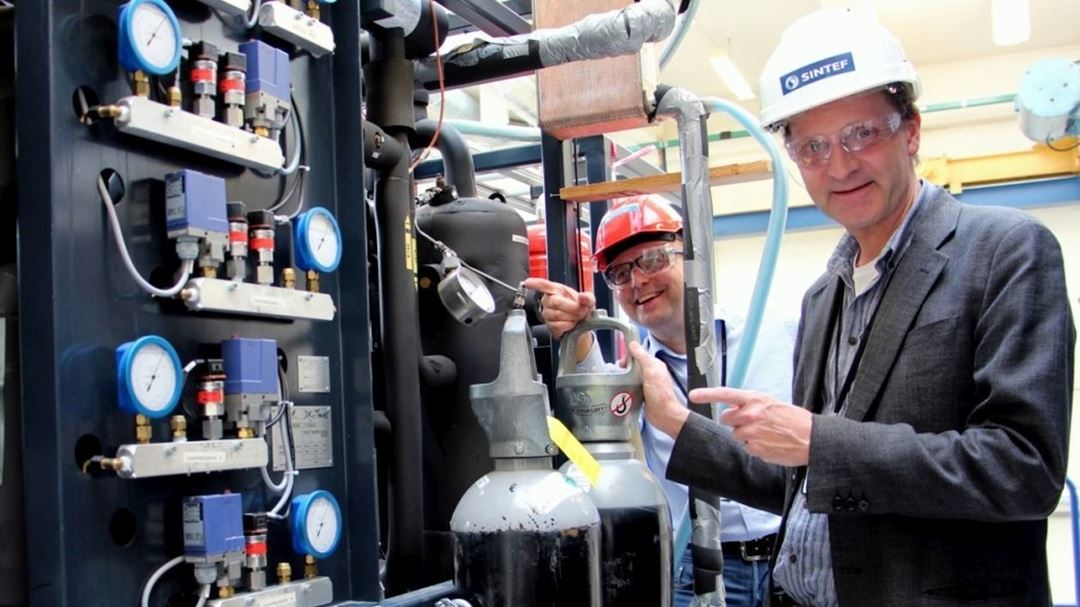When sales of EcoCute water heaters recently passed the ten million mark in Japan, it represented a global breakthrough for environmentally friendly technology with deep Norwegian roots. The heat pump technology, based on natural CO₂ as a refrigerant, was originally developed at NTNU and SINTEF in Trondheim.
The story begins with legendary professor Gustav Lorentzen at NTNU and SINTEF. In the 1980s, as the international community began phasing out ozone-depleting CFC gases following the Montreal Protocol, Lorentzen advocated the use of natural refrigerants. His idea was simple yet groundbreaking: it’s wiser to use substances that already exist in nature rather than developing new chemicals with uncertain environmental impacts.
Among Lorentzen's students was Petter Nekså from SINTEF Energy Research, who in the 1990s developed the first pilot plant for CO₂-based heat pumps for hot water heating at the Gløshaugen laboratory. The technology proved particularly effective for water heating, achieving high efficiency and significant energy savings.

Japan quickly adopted the technology and commercially launched the EcoCute heat pumps in 2001. The technology uses CO₂ as a refrigerant instead of traditional, far more climate-damaging gases. Sales surged after 2010, and now, 25 years after launch, ten million households have installed EcoCute systems. This has resulted in enormous climate benefits: the eight million heat pumps still operating prevent emissions equivalent to 7.5 million tonnes of CO₂ annually compared to previous gas-fired systems. This equals 16 percent of Norway’s annual emissions in 2024.
Had these households used electric boilers instead, annual electricity consumption would have been as much as 46 TWh higher—one-third of Norway’s total annual electricity production.
“This is a fantastic example of how Norwegian research creates global impact,” says Petter Nekså of SINTEF Energy Research. “Seeing the outcomes of investments in fundamental and applied research, and how Trondheim-developed technology has had such significance in Japan, clearly demonstrates that such initiatives yield substantial benefits for both the environment and society. Now, this technology is also bringing major environmental benefits to Europe and Norway, typically in facilities with larger heating capacities than those in Japan.”
The environmental benefits don't stop there. Since traditional fluorinated refrigerants have a greenhouse effect up to 1,700 times greater than CO₂, EcoCute has virtually no noticeable climate impact in the event of refrigerant leaks. Furthermore, fluorinated refrigerants can degrade into PFAS, known as "forever chemicals," posing severe environmental problems. Using CO₂ as a refrigerant avoids these issues entirely.
Despite the wide acceptance of CO₂ technology, considerable work remains before artificial refrigerants are phased out entirely. Professor Armin Hafner at NTNU describes the researchers' current focus:
"We're now working on simplifying heat pump processes using natural refrigerants like CO₂. Combining this with smart solutions for heat storage can make the entire system even more efficient and sustainable—ensuring the green transition occurs without creating new environmental or health issues for future generations. Knowledge must be widely shared with both research communities and industry globally, so the green solutions we choose today don't cause new problems tomorrow."
For Japanese households, EcoCute has long since become a familiar part of everyday life. Sometimes, all it takes is one good idea—and persistent research in collaboration with industry—to create a shift with impacts far beyond where it all began.



